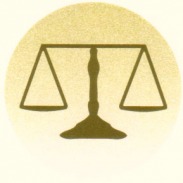Navigating Fair Use and Copyright Law: A Case Study on How Students Compose Multimodal Compositions
Nicole Williams

While teaching multimodal compositions, projects that combine more than one mode such as audio, text, and image, one component that instructors have to consider, which is an issue that is not prevalent in instruction of alphabetic texts, is fair use and copyright law. Composition instructors are well trained at explaining to students the importance of documenting sources using MLA or APA format to give credit to the ideas of others and avoid plagiarism. Multimodal composition involves not only the documentation of sources but an adherence to fair use and copyright law which limits what, how, and how much of an image, text, or audio track a student can use that does not belong to them. Unfortunately, fair use and copyright law is not always clear cut and easily explained to or understood by students and teachers alike. More importantly, students have to make sure they not only understand the specifics of fair use and copyright law, but they must then apply the law accordingly within their compositions, ensuring they abide by the rules as serious penalties and consequences could ensue if the works were self published in any public forum (blog, website, wiki).
This is an empirical research study which includes a series of interviews with students in an English 103 composition class (first year composition) at Ball State University during a unit where they were working on multimodal compositions. The research study consisted of a two-part interview process while the students were composing a multimodal project and after completion of the project. The questions were directed toward asking students about the process they undertook while creating the project and if they had to: change their initial plan due to fair use and copyright law, were hindered, restricted, or confused. The student interviews as well as multimodal projects were analyzed to understand the role fair use and copyright law played in the construction of the projects.
Evidence shows that the students were hindered creatively by fair use and that they were confused by the fair use doctrine. The lack of concrete rules in the fair use doctrine resulted in this confusion. More importantly, the majority of students confused fair use with documentation, which raises questions of both the fair use doctrine itself and pedagogical methods of instructors.
